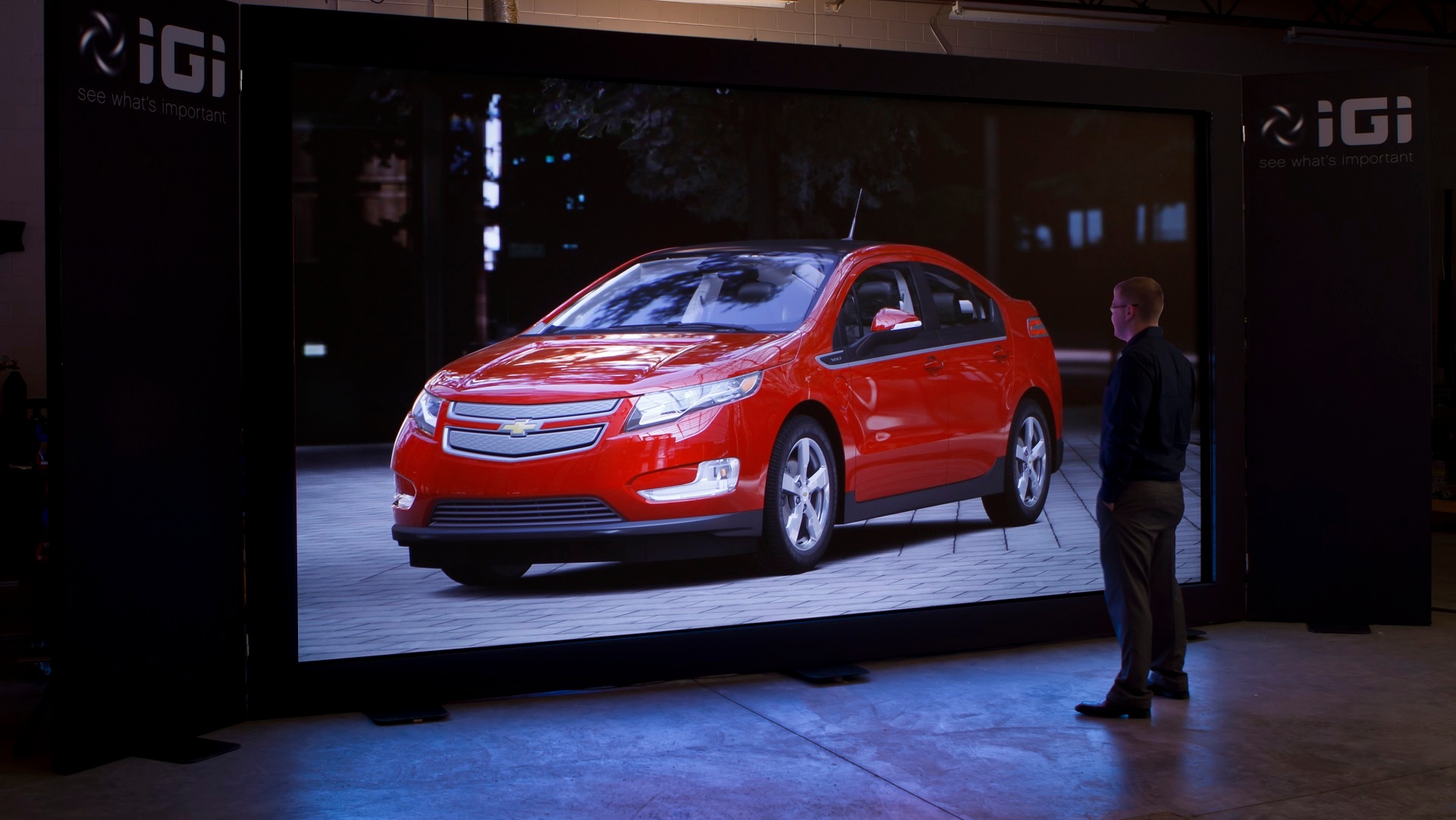

Choosing the right visualization system for your organization can be challenging. From PowerWalls to CAVEs, there are plenty of options to choose from, and it’s easy to be swayed by one over the other, even if it’s not the right solution for your industry or application.
How do you choose? Getting clear on what the system will be used for is the most important first step. It also helps to examine the details of each option to better understand what it can provide, and what it can’t. Often, large dynamic organizations need more than one solution, while others may not need an advanced visualization solution at all.
Let’s take a closer look at the pros and cons of each of the major visualization solutions: PowerWalls, CAVEs and HMDs.
PowerWalls are a popular choice for designers and engineers in the automotive, aviation and consumer goods industries who need to view their product models at full scale. They are used for both presentations and viewing external designs, such as full-scale cars or grocery store aisles. PowerWalls are typically used by mid-sized groups of six to 20 people.
Organizations often use PowerWalls as the next step up from a large screen monitor. Rear projection PowerWalls eliminate occlusion, and floor-up design is widely used by automotive environments because cars sit on the ground. PowerWalls also encourage better collaboration, because the full-scale design is more engaging than a big screen monitor.
The most significant downside of a PowerWall is its footprint: rear projection models take up the full length of the wall they occupy, and they require dedicated space behind the system. The price of PowerWalls is also a factor: cost increases in tandem with image quality and can quickly add up.
Fully immersive CAVE virtual reality systems create collaborative environments ideal for design, engineering and simulation.
In the automotive engineering and design fields, CAVEs allow teams to view exactly how parts fit with one another and interact directly with data for ergonomic tests. CAVEs can be particularly valuable by eliminating inefficient part placement and streamlining interior design.
For all their value, the downsides of CAVEs must be weighed against their potential benefit. Classic CAVEs tend to be small, with a capacity of only a few people. And, while the usable area of a CAVE is small, the overall footprint is typically not.
In addition, the environment in a CAVE is largely controlled by a single tracked user, which means in a three-person team, the other two team members need to position themselves directly behind the main user in order to experience the full benefit of the system.
Head-mounted displays (HMDs) are of the more commercially recognizable visualization options due to their use in consumer spaces such as gaming. Their benefits when compared to PowerWalls and CAVEs are clear: the cost is low and there’s no footprint required.
However, HMDs lack the image quality and speed most sophisticated users require. Image quality on HMDs is not yet high enough for most design tasks, as large, highly detailed data sets are too resource intensive for today's high-end graphics hardware.
Additionally, by their very nature, HMDs require a single-user experience and eliminate the face-to-face aspect inherent with PowerWalls and CAVEs. This factor can hinder the collaborative environment many teams count on during the design and engineering process.
Whatever your specific needs, IGI can help your organization realize its advanced visualization goals. We perform comprehensive consultations and site surveys and custom engineer your solution to optimize system performance.
We’re an industry leader in the complete integration of ultra-high resolution Advanced Visualization systems, including PowerWalls, CAVEs and Virtual Reality. Request a consultation to learn more about how your company can realize the operational value of advanced visualization for your audiovisual display needs.